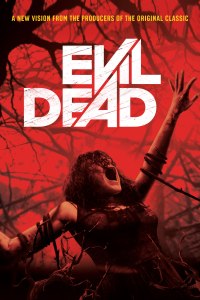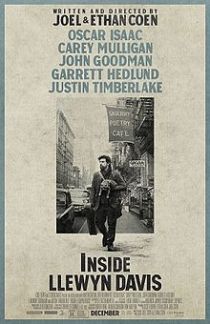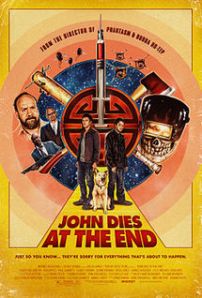I was not happy at all when I heard Evil Dead was being remade, so my low expectations may have contributed to this film making my top 10. The original trilogy is one of my favorite horror series and I thought that there was no way a remake could do it justice. But the new Evil Dead didn’t really end up being much of a remake at all. While the basic concept remained similar, the characters and plot were changed completely. By advertising itself as a remake, Evil Dead allows for the audience to be surprised when it doesn’t play out anything like the original. It feels more like a sequel or spin off.
The central story revolves around Mia, a heroin addicted heroine trying to kick her habit. Her brother and 3 friends accompany her to a cabin in the woods to support her attempt to quit using. The heroin addiction turns out to be a clever plot device, as it creates a reason for the group to want to stay at the cabin. When Mia becomes possessed and starts acting crazy, all of her friends blame it on the withdrawal and try to keep her from leaving for as long as possible.
Jane Levy’s performance as Mia is the only one that really stands out. Her descent into possession is portrayed very believably, and her transition from being terrified to being terrifying is quite remarkable. In a scene where she allows herself to be scolded by the hot water in the shower there is a vacant look about her that is guaranteed to give most viewers chilled. Once she becomes fully possessed her voice and line delivery conjure shivers. Shiloh Fernandez who plays Jane’s brother, Milo, also put forth a sympathetic performance, but as his character never has to undergo any form of transformation, he is not given the same opportunities to show his acting range.
One of the most admirable qualities of Evil Dead, was the choice to use mostly practical effects. This is easily the goriest movie to be released in the past decade, and the gore is finally real for a change! Well it’s not technically real, but it’s not animated. CGI has been favored in most horror movies recently, as it less expensive than creating the mechanisms and doing the makeup to create real gore and effects. While the creators admit to using some CGI for touch-ups, they claim that all of the gore was first created practically. It definitely pays off, as the blood and guts in this film are absolutely disgusting in the best kind of way. Practical effects are coming very close to being eliminated by CGI, so it is extremely refreshing to see a movie use them just as freely as it’s predecessors did over 30 years ago.
It has been rumored that this film is the first of a new series that will eventually tie back into the originals. If this is true, I’m beyond excited to see what the creators will do with it. I can only hope they can keep the same originality they put into Evil Dead going for a few more films. This reboot may have been the start of one of the goriest and most creative series in modern horror.


